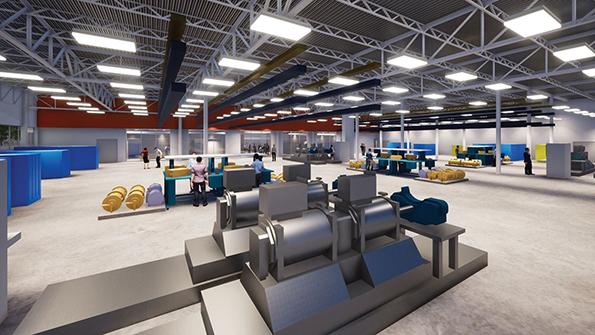Opinion: Can The U.S. Keep Its Lead In Commercial Aviation?

U.S. leadership in commercial aviation is at risk. To meet the industry’s stated goal of net-zero carbon emissions by 2050 and provide airlines with the performance necessary to compete in the global aviation sector, it is clear that the next generation of aircraft will require a step-change in technology. What is less clear is the path these new technologies will follow to reach maturation in an increasingly dynamic international market.
In the past, many technologies were matured during aircraft development. Yet with no new commercial aircraft expected to launch until the 2030s, we are facing a significant gap in new development programs. This gap notwithstanding, airframers are seeking full demonstration of next-gen technologies prior to the launch of new platforms, and our industry is investing and working to meet that challenge.
The lull in new aircraft development programs has implications for the U.S. commercial aviation workforce as well. Still reeling from the effects of the COVID-19 pandemic—which resulted in staff reductions and drove many older workers in the industry to retire—the lack of new aircraft development programs makes it harder for employees to maintain their expertise and for companies to attract and retain top talent. Development of innovative aviation technologies is critical to retaining and developing this workforce.
These challenges are compounded by levels of spending by Europe and China in aviation research and development that are orders of magnitude higher than that of the U.S. While the U.S. on average has invested several hundred million dollars annually for public-private partnerships on aeronautics R&D with NASA and the FAA, Europe and China are making at least 10 times that level of annual investment.
Recently, I testified before the U.S. House subcommittee on space and aeronautics as an industry representative to offer four recommendations to Congress as it considers the FAA Reauthorization Act of 2023:
• Reauthorize and continue investment in FAA R&D programs. Congress should reauthorize and consider the relevant funding levels needed for FAA R&D programs, including the Continuous Lower Energy, Emissions and Noise (CLEEN) program, to support development of innovative technologies to help make aircraft greener, quieter and more efficient. We also encourage the committee to build on existing programs that facilitate regional hubs for clean fuels and to partner with universities to advance R&D while building the STEM workforce pipeline. The bill should encourage and fully support FAA collaboration with the Energy Department to accelerate R&D investment and certification of clean fuels—such as additional sustainable aviation fuel feedstocks, hydrogen and ammonia—and advanced battery storage for electric propulsion.
• Align FAA R&D and other federal research programs according to key technology areas necessary to demonstrate efficiency, sustainability and competitiveness goals. The goals include but are not limited to programs focused on: continuous engine improvements, aircraft electrification, fuel cell and battery storage and hybrid-electric flight technologies; sustainable aviation structures to support R&D and technologies to reduce weight, improve safety and advance sustainability; and leveraging advanced data sciences and connected aviation software capabilities to develop, test and pilot software-based technologies rapidly.
• Expand on the FAA’s Fueling Aviation’s Sustainable Transition program to accelerate development and demonstration of electrification and other low-emission aviation technologies.
• Continue to build on coordination with NASA on an aeronautics R&D technology road map, funding and flight testing, including opportunities to develop and test FAA R&D technologies through the Sustainable Flight National Partnership, as well as those with industry through the CLEEN program, among others.
In addition to collaborating with the U.S. government on R&D programs, the commercial aviation industry needs to make strategic investments in advanced technology development, test facilities and its workforce. For example, at my home site in Rockford, Illinois, Collins Aerospace this year is opening The Grid, a $50 million advanced electric power systems lab. The lab is intended to help develop components for hybrid-electric propulsion systems—one of the step-change technologies integral to next-gen commercial aircraft. These industry investments and facilities can be used in cooperation with federal R&D programs to test advanced technologies through public-private partnerships.
Despite the headwinds the U.S. commercial aviation industry faces, we are on the cusp of game-changing advances that have the potential to alter the way we fly forever. Working together, we can help realize these lofty ambitions while preserving the competitiveness and strength of American aviation in the process.
Eric Cunningham is the vice president for Electric Power Systems at Collins Aerospace, a Raytheon Technologies business.
The views expressed are not necessarily those of Aviation Week.




